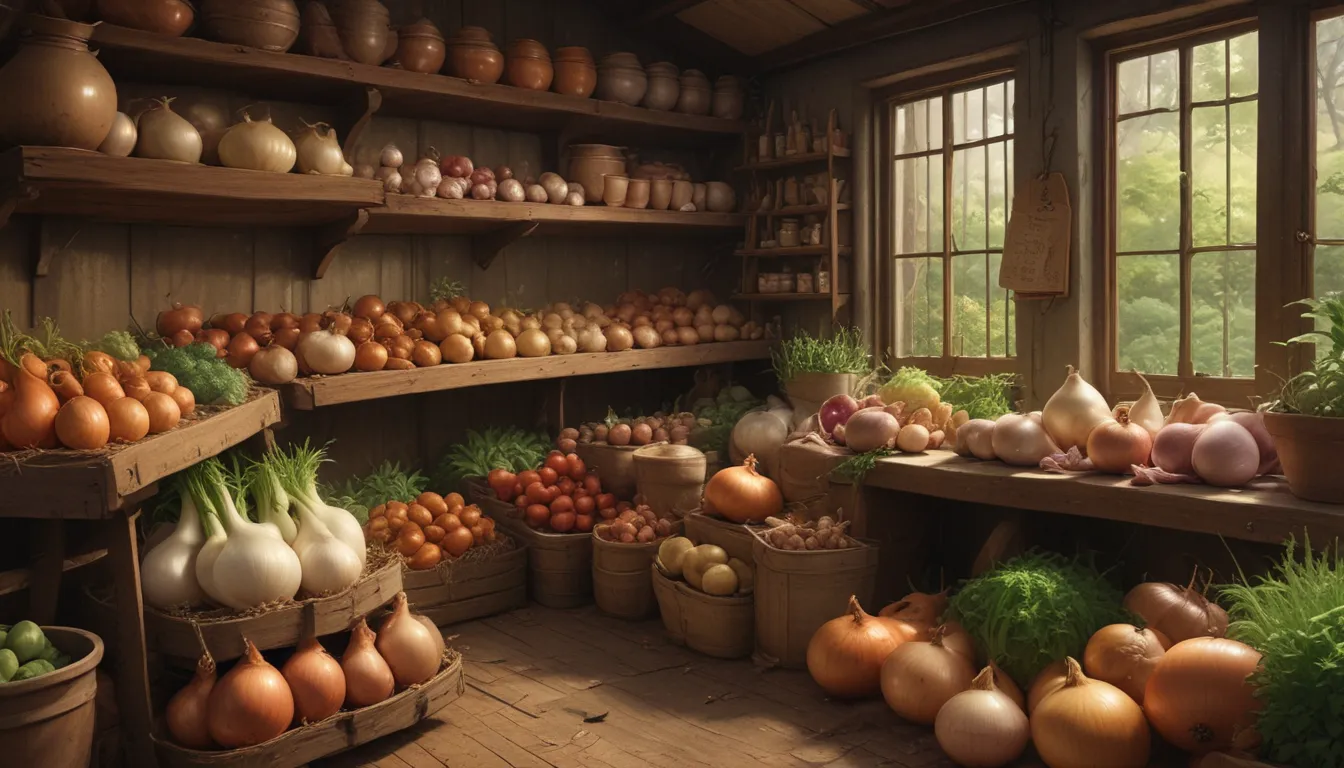Mastering Onion Storage: A Comprehensive Guide for Home Gardeners

Onions are a beloved vegetable in the Allium genus, taking their place alongside garlic and leeks. They are a staple in cuisines around the world and a popular choice for many home gardeners. With both early- and late-season varieties available, it’s possible to enjoy multiple harvests by planting in succession.
In our comprehensive guide to growing onions, we cover all the information you need to successfully cultivate these flavorful veggies. However, in this article, we will focus specifically on onion storage – a crucial aspect of maximizing the use of your homegrown produce.
What You’ll Learn
Here’s a sneak peek at what we’ll cover in this detailed guide to storing homegrown onions:
- Onion Primer
- Storing Bunching Onions
- Curing Fresh and Storage Varieties
- Storage Solutions for Cured Onions
Let’s dive in and explore the best practices for storing your onions to ensure a bountiful harvest for months to come.
Onion Primer
In our guide to 15 of the best onion varieties, we categorize them into three main groups:
- Bunching
- Fresh
- Storage
Each category offers unique flavors, textures, and storage requirements. Here’s a quick overview of what to expect from each group:
Bunching
If you’re a fan of sweet and tender onions, the bunching varieties are perfect for you. These onions have a short growing season and are prized for their delicate tops. They can be harvested in as little as eight weeks for continuous cutting.
Examples of bunching onions include scallions, spring onions, chives, and leeks. These varieties are ideal for spring and summer harvests.
Fresh
Fresh onion varieties take longer to mature, typically over 100 days. They have sweet, juicy bulbs with thick layers that retain moisture for a softer texture. Popular fresh onion types include Bermuda, Cipollini, shallots, Spanish, and Vidalia.
Like bunching onions, fresh varieties are best suited for spring and summer cultivation.
Storage
For long-lasting and pungent onions, storage varieties are the way to go. These onions can take up to 150 days to mature, developing a robust flavor and multiple layers that bring tears to your eyes during preparation.
Storage onions have a globe-like shape with a narrow neck that aids in drying and curing for extended storage. They are typically harvested in the fall and winter months.
Storing Bunching Onions
Bunching onions are the most perishable of the onion varieties, requiring careful handling to prevent spoilage. Here are some tips for storing bunching onions:
- For freshly harvested bunching onions, stand them in a glass of water or wrap them in a damp paper towel for short-term storage.
- Change the water daily and keep the onions away from direct sunlight to maintain freshness.
Fresh and storage onion types, on the other hand, require a curing process to extend their shelf life.
Curing Fresh and Storage Varieties
When your fresh and storage onions reach maturity, it’s time to begin the curing process. Here’s a step-by-step guide to curing onions for long-term storage:
- Gently lift the mature onions out of the ground by the foliage.
- Lay the bulbs in a single layer in a cool, dry, and well-ventilated area for 2-3 weeks to allow them to cure.
Proper curing will enhance the flavor and longevity of your onions, ensuring you can enjoy them well into the winter months.
Storage Solutions for Cured Onions
The key to successful long-term onion storage lies in choosing the right containers and conditions. Here are some effective storage solutions for storing cured onions:
Canvas Keeper
- A double-lined cotton bag that breathes to keep produce fresh while blocking out light.
- Perfect for small-scale storage in sheds or kitchens for short-term use.
Jute Baskets
- Rugged and flexible woven baskets that hang conveniently in a cool, dark location for long-term freshness.
- Ideal for smaller-scale storage with easy access to your onions.
Laundry Basket
- An everyday item that can double as a storage solution for root vegetables like onions.
- Features open top and ventilated side cutouts for optimal airflow.
Mesh Bags
- Polypropylene sacks with a drawstring handle for storing onions flat or suspended as desired.
- Available in packages of 10 or 50 for convenient storage options.
Storage Rack
- A six-tier vegetable storage rack with sliding drawers for keeping onions in well-aerated single layers.
- Constructed of Chinese fir wood for durability and functionality.
By choosing the right storage containers and conditions, you can maximize the shelf life and flavor of your homegrown onions.
Onions for All Seasons
Whether you prefer bunching, fresh, or storage onions, proper storage techniques are essential to avoid waste and spoilage. Here are some final tips for storing onions:
- Discard onions with blemishes, mildew, or soft spots to prevent bacterial growth and spoilage.
- Store onions with their skins on outside the refrigerator to avoid moisture buildup.
- Consider canning or freezing excess onions for long-term storage and use.
- Frozen raw onions can last up to eight months in the freezer at 0°F.
With succession planting and efficient storage solutions, you can enjoy delicious homegrown onions year-round.
Tell us about your onion-growing experiences in the comments below, and feel free to share any additional tips or tricks you’ve discovered along the way!
With a little creativity and attention to detail, storing homegrown onions can be a rewarding and enjoyable experience. By following these expert tips and techniques, you can savor the flavors of your garden harvest throughout the year. Whether you’re a seasoned gardener or a beginner, mastering the art of onion storage will enhance your culinary creations and provide a sense of satisfaction in preserving your harvest.





